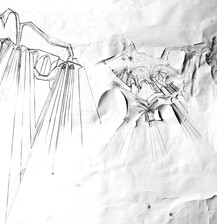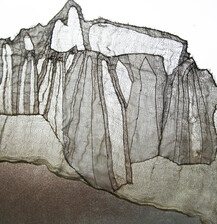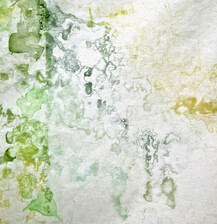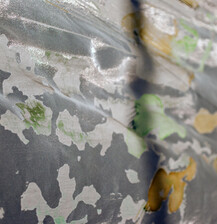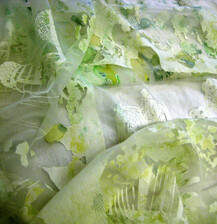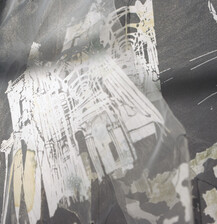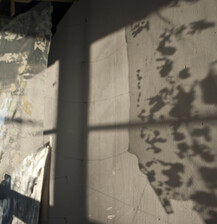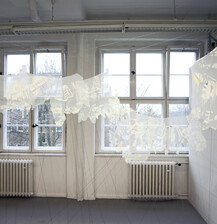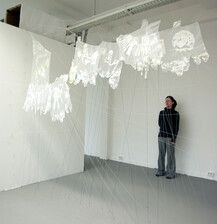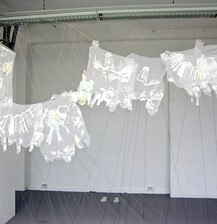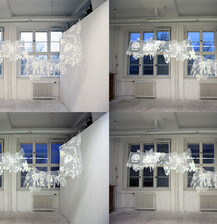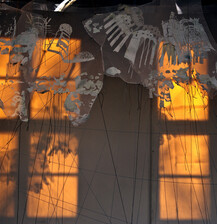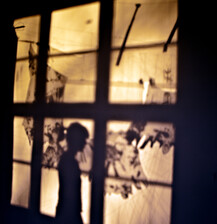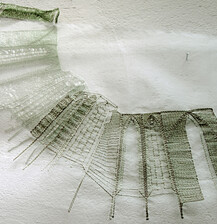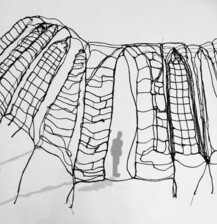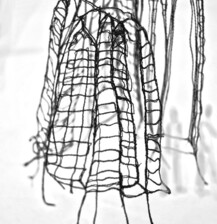Wintersemester 2010/11,
COLLECT: Openings Collection of Ruins
/Opening/ Collection of Ruins
Betreung von Linda Florence
Concept Keywords/ ruin/abandoned/ old/ broken/ open/ structure/ line/ architecture/ skeleton/ bones/removed/ disappearance/ corrode/ destroyed/ survived/ temporary/ see through it.
… the sensation of surprise and of the discovery of something, but also the connection between oneself and something that has been there for a long time (that has a story) and the wish to save something from disappearance… that is maybe collecting for me.
In 2007 I began my photographic collection of ruins. These places communicate strong sensations to me, when I am there I can see the process of time in action, accelerated by man's demolitions of buildings or layered by natural material decompositions and action of natural elements.
Maybe it is these marks on the surface and this temporary structural condition that I want to save, whereas the buildings, if in perfect condition, probably would not be interesting to me. Actually all the pictures I choose for my collection don't only show evident signs of decomposition of the surface, but also more evident openings through the walls and the roof, so you can see the sky through them. In these buildings I can also perceive the architectonic skeleton; the corrosion of the surface opens up a direct view of their inner structures and creates an entirely new perspective on them.
Being inside is an adventurous and - because of the opening and of the width - also sublime experience. In these aspects I see a connection between Gothic (exasperations of width in architecture) and the perception in Romanticism (the ruins and overhang of nature)
/Inspiration/
_Primary research
My photographs of ruins were my first inspirations for this project, first of all the one of my home.
At this point I started the process of subjectivisations of something, in my case of a ruin, that means at the same time the remains of something and an empty place for personal projections. I think that everything starts in this moment: the mind automatically proceeds completing the missing parts, even with fantasy when there is no other element. So in an absurd way these bricks of something that is there partially, become bricks for potential employment by our imaginations.
As reference for my research I took the German painter Caspar David Friedrich, because of his strong focus on landscape as well as on ruins.
One of his paintings gives a perfect vision on the Romanticism in the fine arts: “The Wanderer Above the Sea Fog” (1818). The man as wanderer and the powerful presence of nature, but also the representation of man from the back looking at the nothing, communicate self-reflection and contemplation.
Also the sublime in the nature reminds me of the tension to the infinite, to this circle of life that stays above man.
Ruins help the feelings in this certain way of perceptions to.
_Secondary research.
The man as a wanderer is a connection point to my secondary research on the architect Constant, who in the context of the “International Situationist” developed the theory of “Unitary Urbanism”, as well as several other theories about exploring the city and perceiving it. Like the theory of “Derive”, as strategy of urban experience, the new urbanism, “exists in time, it is the activation of the temporary, the emergent and the transitory, the changeable, the volatile, the variable, the immediately fulfilling and satisfying”.
Constant, “Unitary Urbanism”
unpublished manuscript of lecture at the Stedelijk Museum Amsterdam, 20.12.1960
What I find really fascinating in his models and drawings is the interconnection of structures and suspension. The architecture is like an extension of the human being.
/Result/
_Process
I tried to emulate the sensations I felt during my discovering of these torn open buildings.
In order to obtain the shapes of the ruins on a transparent surface, I worked with the devoré technique in combination with procion dye for the colour to be visible from both sides, with the wonderful vantage that I can paint it directly on the screen, in varying colour intensity similar to water colour. This solution also worked well on a screen with an image of a corroded surface on it.
The result at the end is this partially transparent surface with the ruins on it as solid part and traces of soft colour like musk overall. Each ruins composition is printed on fabric elements which, when suspended, on the top side re-model the skyline seen through the windows of the installation room. On the lower side these textile elements show the fragmentary outline of my ruin collection.
The threads in the colours black, grey and cream, which are used to tense the installation, derive from photographic manipulations I did: cream for the sky, grey and black for the buildings. The lines of these threads suppose to continue the architectonic lines of the ruins in a low-angle perspective as also in my first photos and sketch drawings.
_Final Result
The final result of my installation is a divisor, which is yet permeable and gives a new and poetic view at the same time of landscape outside and interior. It plays with the space, creating projections of shadows that move with the sunset all around the room.
It includes a surprise element: seen from a precise, marked on the floor for the feet and on the wall for the eyes, the composition fits exactly with the skyline behind the windows; so that an experience of a discrete discovering can take place.
This work is thought as an art installation, that works as a divisor/non-divisor because of its transparency and thin consistence, rather stimulating communication than inhibiting it. It is static, but contains tension. Through the movement of the shadow it interacts with the surrounding space. It is well applicable as a sophisticated divisor, an atmospheric element in a waiting, studying or meditation room, in a library or in a private space, as well as scenography.
